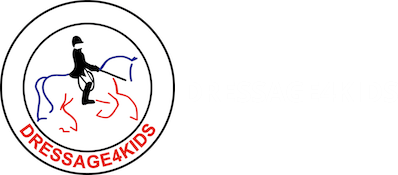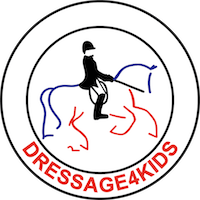The Jog, Required for 2nd Level and Above
Tentatively scheduled for Friday, August 9th at time tbd
At all International shows the jog is part of the FEI Vet Check. The purpose of this check is to properly identify your horse and be sure that he is sound enough to compete. When you compete in these competitions your horse has a passport that includes all of his identifying marks and an up-to-date record of your horse’s vaccinations. All horses are required to jog before a panel of judges and veterinarians to prove their soundness and readiness for competition. The jog is usually held the day before the competition starts and sometimes again during the competition.
Don’t worry! At the Youth Dressage Festival you don’t need a passport, but the jog is required as an educational activity for all riders competing Second Level or above (including FEI Children's, FEI Pony, FEI Junior, FEI Young Rider, FEI U25) who have not competed in a CDI. If you do not attend, there is a 5-point penalty.
The jogging area is usually on a specially prepared area where the ground is totally level and firm, sometimes even paved. There will be a path about 100 feet long with room to turn around something like a flower pot at the end away from the judges. American Olympic judge Linda Zang says that she loves the jog, because she can see all of the beautiful muscling of correctly ridden Dressage horses. Now you get to make “first impression” before you go down the centerline!
Horses should be spotlessly clean. Although they are not required to be braided, braiding does show off the horse better. Avoid any hoof polish that will cover up the natural striations of his hoof wall – part of the “identification” process. The horse wears nothing but a snaffle bridle with bridle numbers, although you might want to put a cooler or fly sheet over him while waiting to keep him warm and/or clean. Don’t let him graze. Take a towel and a damp sponge to the holding area for last minute touchups, particularly of eyes and nostrils and a quick de-dusting of the coat.
The rider must be clean and “crisp.” The thoughtful dedicated rider presents himself with the same care that he puts into his horse. Men sometimes wear jackets, ties, and slacks. Women often wear long (not tight) skirts or slacks with a blouse and a blazer. You should not have jingly jewelry. Everyone wears running shoes or at least a shoe they can easily and safely run in. A shirt and slacks are fine, but avoid jeans and riding attire, if possible. If you do wear riding clothes, you must not wear spurs. Remember, this is the first impression the judges have, and presenting oneself as someone who takes pride in everything you do is not a bad idea. The rider must jog his own horse, unless special permission is granted before the jog.
It is very important that the horse not be taken to the jog without some exercise first. He may be ridden or lunged earlier. At the very least he should be hand walked and jogged for 15 minutes, to insure that he is not at all stiff and he remembers his manners. It can also be helpful to watch some riders before you go, to get a feel for the routine.
Another way of demonstrating to judges and onlookers that you are a rider who doesn’t pay attention to details is to present a horse that doesn’t stand well or that will not willingly trot on the line. For many horses, a considerable amount of time may be needed at home to teach him to stay by your shoulder at all times; to pick up a trot at soon as you start to run or give him a cluck; and to stop quietly when you stop. Practice at home every day before and after you ride until your horse is reliable. And even then, do regular tune-ups.
Some horses that are sound do not move well on the line. You need to practice at home in front of someone with a good eye. Does the horse look better jogging a little slower or a little faster?
As the horse ahead of you is jogging, remove any covering and do last-minute dust and nose wipes. Have your passport in hand (unless it has been turned in earlier). As soon as your number is called, walk energetically up to the judges and stop, look the chief judge in the eye, and state you number, name, and horse’s name. Stand
in front of your horse with one rein in each hand. Move slightly to the side as needed to make sure you are never between the judge and your horse, as he checks that the markings on the passport match your horse and as he looks at the general condition of the horse.
When told to jog, turn and face the same direction as your horse and walk forward. There are different routines for the jog, but usually you walk the horse half way toward a marker (often a big flower pot). Then you pick up a jog. Walk as you get to the pot, turn the horse to the right around the pot, and jog back. Make sure you go in a straight line both ways. You must have the reins loose. The horse should move out with energy in a straight line at a rhythmic trot. The horse should be taught to stop when you raise your left hand up in front of you and turn as you move your hand toward, but not near, his eye. If you hold the reins too tightly, if the horse is naughty, or if the judges question his soundness, you may be asked to go back and do it again.
Hopefully, as you trot back past the judges you will hear the word, “Accepted.” If nothing is said, stop slightly away from the judges and wait for their decision. If the judges still question his soundness, you may be asked to wait until the end of the jog to be re-examined. It is essential while you are waiting that you keep the horse moving.
As you leave the area thank the judges.
Additional information regarding the Jog is available at https://yourdressage.org/2019/03/26/beginners-guide-to-jogging/.

